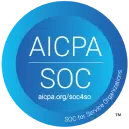Getting the Agile balance right
The author of this guest blog was Director of Quality Engineering at a global information analytics business specialising in science and health. The author was responsible for overall Quality Engineering strategy across one of the business units before recently taking a position closer to home.
Whether you’re talking about governments or Agile development, the decision to centralise power and aim for consistency or to let individual groups self-govern can be polarising. As ever, there are no black and white answers.
We have learned through experience that different groups move at different speeds and work in different ways for very legitimate reasons. We accept this as a good thing and it reflects the spirit of Agile. Equally, there needs to be some degree of consistency for other legitimate reasons. Getting that balance right is both a challenge and an opportunity.
My team covers quality engineers across various locations and various stages of Agile maturity. Most teams hold the usual Scrum ceremonies and do two-week sprints. Other Agile practises vary and teams are empowered to find ways of working that work best for them. Another thing that varies is our use of tools. We have consistency across the board for some, such as the use of Jira, but the tools in use for CI/CD, version control, static code analysis etc. can vary.

This brings me to why we decided to work with Plandek for Agile metrics. Other alternatives we looked required teams to work in a consistent way, using the same tools and even a single Jira instance – clearly not practical for us. Plandek was the only tool we found that let us integrate data from multiple tools and Jira instances into a single dashboard.
Since we’re running multiple Jira instances and a couple hundred different ‘projects,’ or workstreams, just having a tool like Plandek that can integrate and present Jira data is proving extremely valuable. We started implementing it in our group late last year and have completed the initial rollout phase of over 100 projects
In terms of metrics, the individual teams are experimenting with determining which metrics are best suited to the way they work. Quite a few squads, for example, work very true to the Kanban style. Anything to do with velocity, or that requires estimation is not relevant to them because they don’t estimate story points. Teams are free to use metrics that are useful to them. We also have a handful of rolled up metrics that we report on monthly and Plandek has helped reduce what was previously a lot of time-consuming manual tasks to gather the data across the group.

Before Plandek we had no way of gathering metrics in a rolled up fashion at all, so we’re definitely seeing value. However introducing Agile metrics is not without its challenges. Just like Agile itself, people and teams embrace it at different speeds. Some immediately see great value in being able to measure certain things and identify the bottlenecks. Others are concerned about being overly-monitored, so we have to reassure those people that we aren’t using metrics as a stick or viewing data out of context. To do this, we agreed as a management team to turn off the ability to drill down into individual’s data and then let individual teams decide if they want to turn it back on again.
What’s helped drive metrics adoption most successfully are the engagement sessions we’ve held with Plandek. In these, Plandek works closely with a particular team that volunteers to showcase their actual (not demo) data to others in the company. Those teams really gain a lot of value from being able to learn from the Plandek consultants, and they also get visibility for their work across the company.
Going back to my original point, there’s nothing black and white about Agile. Trying to achieve total consistency goes against the whole Agile ethos. At the same time, some level of consistency, especially when you’re scaling, is desirable because it provides some common ground for sharing best practices and continuous improvement. It’s much easier for people to adjust to a gain, then a loss, so I would advise other companies in our situation to hang onto some reins of consistency while empowering teams with the flexibility to adapt Agile – and metrics – to their unique requirements.
Found this article useful? Share it with your network and tag Plandek.
Stay tuned – we will be publishing our next CXO Blog post shortly! Follow Plandek on LinkedIn for more updates.














